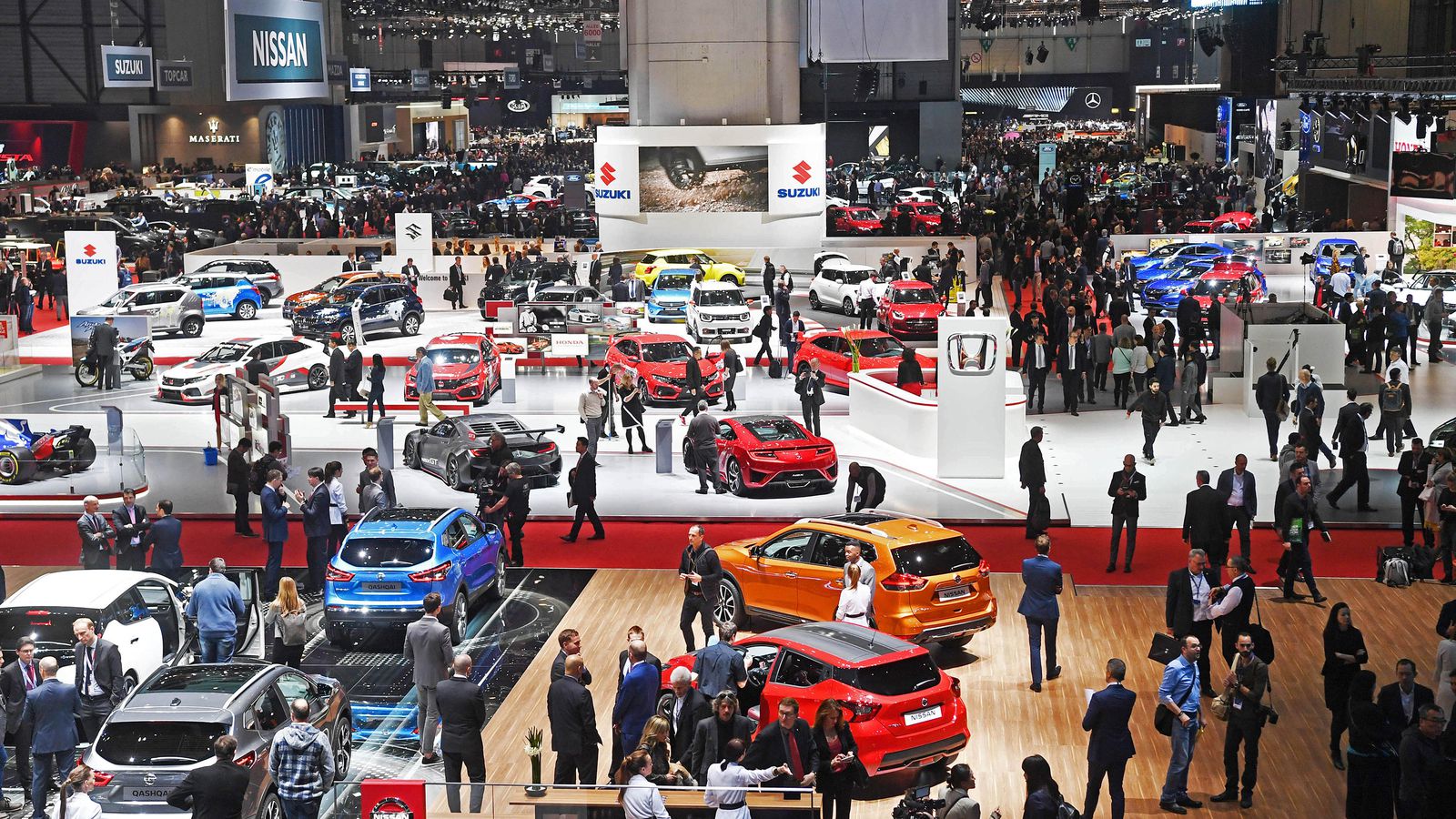News that the traditional Geneva Motor Show in Switzerland has been permanently cancelled (to be replaced by new car show called Autoxperience Geneva) marks the end of an era. It’s also the close to an interesting example of geography mattering just as much as industry where certain exhibitions are concerned.
Successful exhibitions traditionally take place in cities or countries with a strong reputation for the sector the exhibition has been conceived to serve. The automotive industry provides a clear example of this. Four of the five largest international motor shows take place in the auto manufacturing hotbeds of Germany, Tokyo, the US and France. Despite the recession’s impact on the car manufacturing industry, these shows continue to pull in the visitors, buoyed perhaps by the collapse of lesser global car exhibitions.
It is the fifth member of this top-tier group, the Geneva International Motor Show (held in a country with no domestic car manufacturing industry) that provides an unusual argument for an international exhibition organiser. The conventional wisdom is that shows should be held in places with strong related local markets. But the truth is that Geneva benefits from Switzerland’s neutrality. Much as it did during the world wars, and as it still does for today’s chastened hedge funds, Switzerland offers its clientele refuge – a place where they can do business on equal terms with their competitors.
Take Detroit as a comparative example. America’s motor city: some brands will be put off launching a new model in the backyard of huge US brands such as Ford, General Motors, Chrysler and Chevrolet. These US brands will hit Detroit looking to impress not only the overseas markets, but the domestic US market; they will throw everything they have at their stands, maximising their marketing spend to drown out competitors’ engines with elaborate and spectacular model launches. It’s an issue that affects all of the international motor shows apart from Geneva. Tokyo is home turf to Toyota, Nissan and Mazda, among others; Germany to Volkswagen, Audi, Mercedes and BMW; France to Citroen, Renault and Peugeot and so on.
Switzerland, on the other hand, is home to the mighty Rinspeed, a manufacturer best known for creating Splash – an amphibious car capable of 50mph on water.
“We are the only international show of these five that takes place on neutral ground,” says director of the Geneva International Motor Show, Rolf Studer. “We have no automotive production in Switzerland. So every brand has the same chance to show its products to the press and to the 700,000 visitors. Without preference.”

This neutrality holds particular appeal for designers. Geneva has a reputation for being the launching ground of many models, and with a level playing field manufacturers are more inclined to unveil their latest models. The exhibition has developed a reputation for being a major branding event, rather than a straight buyer’s market, evidenced by the high number of model launches. And model launches bring the media, which means the show doesn’t need to rely on performance arenas and similar showpieces. “We don’t need spectacle – we have serious things,” says Studer firmly.
Historically, the economic evaluation of exhibitions has tended to be limited to the so-called heads-and-beds rule which is often used to assess the impact of tourism. While these are important metrics and should be evaluated, the impact of an exhibition is a great deal wider and needs to be assessed in full.
Many destinations have created ways to measure this impact using Geoffrey Dixon’s notion of direct, indirect and induced spend from the event itself and its attendees, but destinations must also evaluate the residual impacts of exhibitions in the social, cultural and political areas.
It is widely accepted that cultural differences in doing business are impacted through human interaction during international exhibitions. The information shared during these shows can also have a political impact, sometimes affecting regulation, co-ordination or investment in a specific topic or area. An infrastructure show immediately following the creation of a new ruling government for example, can even facilitate specific policies. Think back to Libya Build in the wake of the Gaddafi regime’s disintegration.
But not all of the socio-economic consequences of an event can be so easy to observe. And while economic impact studies are commonplace today, their importance often goes unrecognised, something that is surely unacceptable for an industry capable of doing so much for so many places around the world.
The Saudi Exhibition and Convention Bureau (SECB), not long into its existence, showed a keen interest in evaluating its exhibition industry. Saudi Arabia has a unique business environment as well as a vibrant exhibition industry, not least as a result of being the largest economy in the Middle East. The country’s awareness of the industry’s significance is beyond doubt.
“The exhibition industry plays an important role in developing the key economic sectors throughout the country, especially in the emerging non-oil sectors,” explains the SECB’s executive director Tariq Al Essa. “Exhibitions help us grow private and public sector investment in a variety of economic categories including transportation, construction and education.”
Overcoming resistance
In sharp contrast to Saudi Arabia’s enthusiasm, in other places there is active resistance to the introduction of competition to a region. While for some a major exhibition turns a city into a platform for its industry and craft, others regard it as the opening of a portal through which unwanted competition can enter and threaten the livelihoods of its residents and even its very economic foundations.
Exhibition organisers in Galicia for example, home to one of the world’s most important fishing ports, spent much of the early 2000s attempting to overcome protective local trade groups and cast their lines in international waters.
In 2004 the autonomous north-western Spanish region made a bold move to attract international business by building a colossal new venue offering 428,000sqm not far from the region’s capital. Feira International de Galicia [FIG], in Pontevedra near Santiago de Compostela, was created in a time of European prosperity; the project was led by Manuel Fraga Iribarne, then president of the Autonomous Government of Galicia, and conceived to offer opportunities for the staging of international events.
The sprawling concrete structure may have made its mark on the Galician landscape with its acres of space, onsite stadium, grand pillars, grand entrance and even grander aspirations, but the old adage ‘build it and they will come’ appears to have gone unfulfilled. Business isn’t attracted to grandeur alone. A decade later and many of its rooms have still not housed the type of attendee they were constructed to accommodate. Municipal development throughout the region and the subsequent creation of smaller exhibition venues in Galicia’s four provinces, tied to regional complications, rendered it more or less empty; an exceptionally large white elephant.
So where and why did Iribarne’s bid to court the international trade show community falter? Well, there was certainly no shortage of globally exploitable industry; Galicia is home to almost 2.7 million people, including leading industrialists such as the world’s third-wealthiest man Amancio Ortega, owner of the world’s largest textile group, Inditex, parent of brands including Zara, Massimo Dutti and Stradivarius.
The world’s largest fishing company Pescanova is based in Vigo, the world’s largest fishing port. Ourense, the inland city that made its name, literally, as a mecca for gold miners, stands as the second largest thermal city in Europe after Budapest, and has been busy for some time now exporting its thermalism spa and wellbeing show Termatalia to Latin America.

The region is also an attractive prospect for pre- and post-event tourism. The ‘land of a thousand rivers’ is lined by 1,030 miles of rugged coastline, broken by tranquil coves and inlets famed for providing some of the best seafood in the world courtesy of the Atlantic. This in itself is a significant point of differentiation for Galicia, given Spain’s more popular association with the Mediterranean. And while relatively isolated compared with Spain’s primary venues in Barcelona, Madrid, Valencia and other major cities, four high-speed trains a day run between Madrid and Santiago de Compostela.
On paper, Galicia’s failure to launch as a destination for international exhibition business is difficult to explain. But neither geography nor communications are the main factors here. Instead the greatest obstacle Galicia needed to overcome was convincing the region’s highly protective trade federations of the need to forge partnerships with global event organisers and exhibitors. As an autonomous region, Galicia is naturally protective of its independence, but there is a sense that while the region has been provided with windows to local industry, local protectionism was pulling the curtains shut.
To combat this, a new association was created to spearhead Galicia’s campaign for international exhibition business. AGAFE was established at the beginning of 2013 to internationalise trade in the region and overcome localism in order to introduce wealth and global business.
And of course, given Spain’s bleak financial outlook at the time, there was an urgently pressing need for international trade. “The economic situation nowadays dictates that this local protectionism cannot remain, and therefore it can be easier to reach that unity,” said AGAFE MD Alejandro Rubin.
One way AGAFE came closer to achieving its goal was by getting the backing of the many small Galician businesses that as a united group carry significant industrial weight. However, winning over the federation of small businesses, one by one, is a time-intensive task.
Once you have achieved this, however, the impact it can bring to a city, or region, is huge.


Leave a Reply